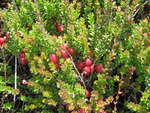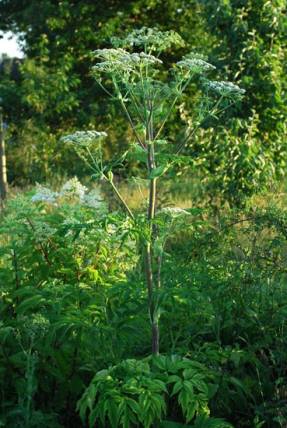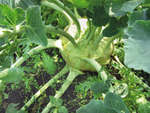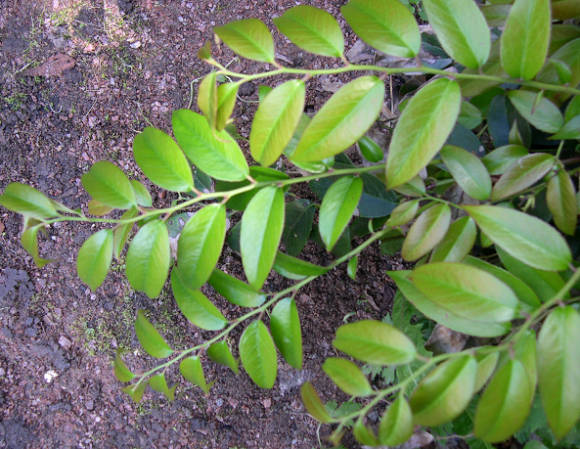Even cats know the catman, and they call him that - Catnip. The aroma of the plant attracts cats as well as valerian. But gardeners rarely plant this plant. No, it is not capricious, rather unpretentious in care, but in winters with little snow, when there is a lot of moisture, it sometimes falls out. In addition, it is a juvenile and requires division every 3-5 years. And the aroma is not to everyone's liking. Although many people enjoy using this plant in teas, pickles and pickles, homemade sauces, vinegars, flower wines, etc.

For the garden, this is a wonderful plant, it brings a rather rare cold blue tint for plants. Looks great in flower beds, forms long flowering borders, goes well with stone in rockeries. And it will turn vegetable beds into an ornamental garden, over which pollinators will fuss, attracted by melliferous flowers.
Of the whole kind of catnip (Nepeta), in which there are about 250 species, several of the most common and decorative species can be distinguished. Among them, there will definitely be one that you will like with its scent.
Catnip (Nepeta cataria) - not the most decorative in this series. Usually quite tall, over a meter. Complex inflorescences - brushes, consisting of semi-umbels, dirty-white, often with purple spots, flowers, are formed at the ends of branched stems. The flowers are small, less than 1 cm long, with a large toothed middle lobe and semicircular lateral lobes. Leaves are ovate, on petioles much longer than the blade.
Nepeta cataria var. citriodora - its variety with a strong lemon scent, often called the lemon catnip, although such a botanical species does not exist.
 |  |
Catnip large-flowered (Nepeta grandiflora) also high, from 0.5 to 1.5 m. Branched stems bear multi-flowered umbellate inflorescences, collected in a long loose raceme. The flowers are violet-blue, more than 1.5 cm long, with a split upper lip and a large, large-toothed middle lobe of the lower lip, much larger than the lateral triangular lobes. The leaves are thin, from ovate to almost lanceolate, pubescent, especially from below, which is why they are glaucous from the inside. Blooms from mid June to August.
This species, although it is called large-flowered, does not have the largest flowers.
But the catnip is semi-seated (Nepeta subsessilis) so beautiful that it is even suitable for cutting. The flowers of a very attractive cornflower blue are collected in spaced false whorls, forming a tall, from 10 to 28 cm, spike of 60-70 flowers! They are large, up to 4 cm long. Leaves broadly oval or broadly lanceolate, obtuse-toothed along the edge, bright green. Blooms in July. Has varieties with flowers of lavender-blue, salmon-pink, lavender-pink shades, they are rare in culture.
 |  |
Siberian catnip (Nepeta sibirica) similar to it with leaves, but they are more pointed and serrate along the edge, upper sessile, lower ones on short petioles, glandular, with a very pleasant aroma. The flowers are bluish-blue, with the smell of honey, in length they can compete with the previous species, but they have a narrower tube, dissected into obtuse lobes of the upper lip and the kidney-shaped central lobe of the lower lip. The flowers form multi-flowered panicles, collected in a loose raceme. The plant is compact and decorative, up to 1 m tall. Blooms in July-August. In terms of beauty, this species is, perhaps, not inferior to the previous one, but it grows more slowly, does not spread out.
Fassen's Catman (Nepeta × faassenii) - a very popular decorative type in Europe. Is a hybrid Nepeta racemosa x N. nepetellaobtained in the Dutch nursery Fassen in the 1930s. It has lodging and ascending stems from 30 to 60 cm long. It blooms for a very long time, from June to September, with small lavender flowers with a weak aroma, densely strewn with the tops of the stems. Leaves are gray-green, pubescent, ovoid, on petioles.

There are a number of varieties with flowers in different shades, from white to lilac blue. The most common variety is Walker's Low - with dark stems up to 60 cm tall and blue-lilac flowers with purple cups, often used for mixborders and borders. Found in 1970s in Mr. Walker's garden in Ireland. Introduced into an English nursery and began to spread in 1988.
Variety Six hills giantformerly called the giant catnip (Nepeta x gigantea) - high, up to 1 m, with lavender-blue flowers, forming extensive clumps.
 |  |
Catnip Musina (Nepeta mussinii) - compact mountain view up to 40 cm tall. The leaves are cordate-oval, the upper ones are pressed to the stem, obliquely spaced below, serrated along the edge, drooping, grayish-green. The flowers are slightly more than 1 cm long, lilac-bluish, with dark purple spots in the pharynx. The upper lip is half dissected, the middle lobe of the lower lip is strongly concave, very large, large-crowned, the lateral lobes are obliquely triangular. Inflorescences consist of several (up to 10) whorls, collected in a rather one-sided raceme. Suitable for alpine slides and container growing.

Domestic botanists refer to this species also close to it catnip transcaucasian(Nepeta transcaucasica), based on genetic research, foreign botanists consider it a synonym Nepetaracemosa... It is more than 50 cm in height, inflorescences up to 10 cm in length, consist of several 4-8-flowered false whorls clustered at the tops of the stems. The corolla of the flower is violet-blue, white pubescent outside, up to 2 cm long, the upper lip is dissected into ovoid obtuse lobes, the lower lip is twice as long as the upper one, with a large central lobe and small obliquely semicircular lateral lobes. Blooms all summer.
Reproduction
Cattlemen can be propagated by seeds and vegetatively. Seeds are sown for seedlings in April and May in open ground. For spring sowing, cold stratification is required. Seeds sprout slowly, 1-3 weeks at a temperature of + 16 + 22оС. Seedlings are thinned out at a distance of at least 30 cm; in each nest, more than one plant can be set aside. For cutting greenery, plants of the second year of life are used.
Division, as for all youngsters, is required every 3-5 years. Plants are divided in May, at the beginning of the regrowth of the stems.
Reproduction is also possible by stem cuttings in May or by green cuttings (tops) in early summer. You can try to propagate by layering - the catnip, for example, takes root very well.
Fassen's cattle and its varieties are propagated only vegetatively.
Growing
Catnip are unpretentious to soils, content with average fertility. In the fall, a small amount of compost or humus is introduced, in the spring they are fed with complex mineral fertilizer. An excess of fertilizer leads to the development of a large green mass at the expense of flowering. The acidity of the soil must be kept slightly acidic or neutral. Acidic soil - deoxidize with dolomite flour in the fall when adding humus.

Most catnip nets are drought-resistant, easily tolerate dry periods, however, the quality of greenery and flowering is higher with regular watering. Water should not stagnate, especially in winter, so raised beds or simply drained places are required. With winter waterlogging, the plants can grow out. Catnip falls especially often in winter, but it recovers well from seeds by self-sowing.
Catnip, planted in the sun, blooms in the year of sowing, very quickly ends the growing season and dies off in autumn, i.e. behaves like a true youngster. If you want it to last for several years, plant it in partial shade. For other species, it is better to choose a sunny place.
Semi-sedentary catnip - a plant of river banks, needs a good supply of moisture.
Plant care is minimal. It is necessary to cut off the faded inflorescences in time (in the middle of the stem) in order to resume flowering. Many catnip plants bloom again in the fall, albeit less abundantly.
Fragrant catnipts are best planted near paths and resting places. They will make a good pair of roses. Low-growing species and varieties can be grown in containers.
Fresh and dried leaves of the plant are used for refreshing and healing teas. They have a high content of vitamin C, a calming effect, help with colds, coughs, fever, stomach ulcers, improve appetite, catnip baths help with skin diseases. The catnip is safe for children.








